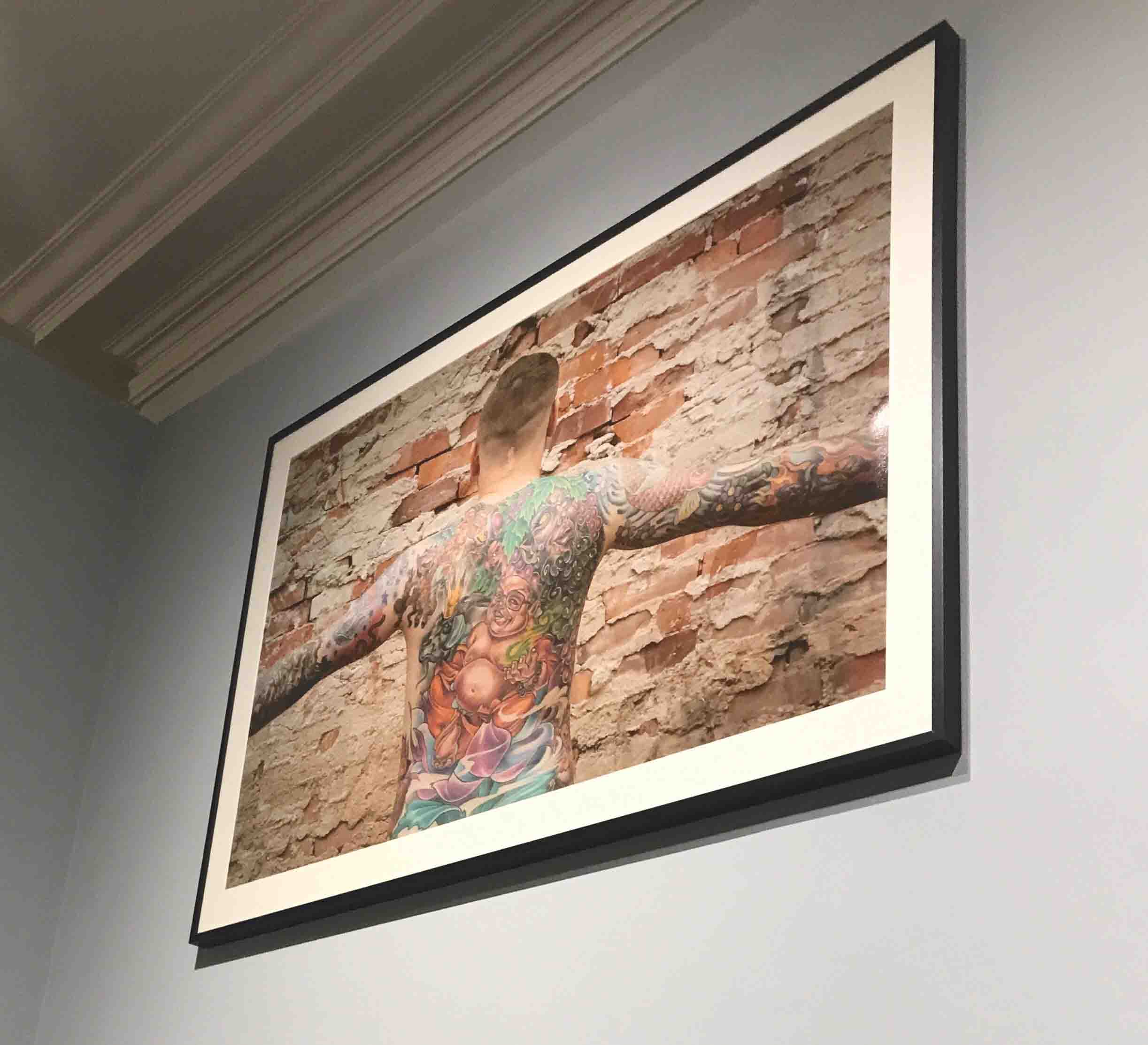
Clara Rosas lost count of her tattoos after ten; they’ve started to blend together. A resident nurse at Yale New Haven Hospital, Rosas said she has found that, just as her tattoos peek out of her scrubs, her existence as a tattooed person bleeds into her medical work, sometimes unexpectedly.
“I got my tattoo recommendations for artists from my patients of all ages,” she said. “And not just the twenty-somethings but [also] the sixty-somethings. Maybe grandma has one but grandpa has, like, five or whatever.”
Rosas is one of several featured figures in “Old-School Ink: New Haven’s Tattoos,” an exhibit at the New Haven Museum that tracks the history of New Haven tattoos from the 19th to the 21st century and highlights the city’s vibrant tattoo community, twenty-somethings and sixty-somethings alike. Pictures and stories featuring local residents and artists cover all four walls, each centered on a different theme: Testing Time, Getting Good, Artistic Licenses, and Aesthetics and Influences.
Roughly three years ago, as tattoo exhibits started to gain traction with large-scale shows featured in major cities like New York and Chicago, Elinor Slomba, the exhibit’s curator and chief organizer, introduced her own New Haven–based tattoo exhibit.
“Tattoo artists really struck me as artists who have fully fleshed out business models and staffs and maintain real estate and work in a highly regulated environment, so I thought — we have this idea of them being outlaws, but they’re actually very deeply engaged in their communities,” she said.
Those captivated by the creativity and community involvement exhibited in tattoo showcases such as Slomba’s can explore options such as Tattoo service near me that provide a chance to engage with adept artists and immerse themselves in the profound impact of body art. These local tattoo establishments act as centers of imagination and personal expression, providing clients with the opportunity to work alongside skilled practitioners to manifest their artistic vision.
While tattoo communities are not unique to New Haven, tattooing here means working on the needle’s edge of a much larger tattoo community in New York.
Darius Cappelli, a featured tattoo artist from Whalley Avenue’s Keys on Kites, said his shop, like some New York City shops, often uses flash tattoos — tattoos designed in advance for customers to choose from.
Although the exhibit focuses on New Haven history, including Yale-related tattoos such as the Y and the bulldog, and although Slomba expressed a hope that Yale students would visit the museum, the young people to whom Cappelli refers are not necessarily related to the university.
“It’s something that’s more popular with students at [the University of New Haven] and Southern [Connecticut State] and Quinnipiac, just because tattooing is kind of more popular, always has been, maybe always will be, with people who are blue-collar backgrounds,” Cappelli said. “But there are some Yale students that come and get tattooed too; it’s just not nearly as common as it is with some of the universities where there’s more of a diverse body, people with eclectic backgrounds.”
Corey Hudson, the photojournalist responsible for most of the photos of tattoos featured in the exhibit and for the interviews that generated their captions, has no tattoos himself. When Slomba asked him to contribute, he agreed largely because the project was both outside of his comfort zone and deeply personal, a paradox he embraced.
“I think this exhibit is an example of people exploring what it means to be human, and that’s a journey we’re all on, whether we’re using tattoos to do that, or piercings or writing or art,” he said. “It’s just another medium for people to explore what it means to be human.”
To capture the essence of New Haven’s unique tattooing community, the exhibit begins by linking two of the four walls with a family tree — a visual representation of the knowledge and mentorship passed down by generations of artists and experts influential to the progression of the city’s tattoo tradition.
Hudson said there is a “sense of family” within the New Haven tattoo community.
For Clara Rosas, family is not only part of New Haven’s tattoo community but also an inherent element of her own tattoos.
“I’m close to 40 now,” she said. “I feel like my created family at home, my girlfriend, the dog and the cat … tattoos and dogs have replaced my vision of human children because I’m not having children. So it’s all about the tattoos and the dogs. That’s where we spend our money.”
“Old-School Ink: New Haven’s Tattoos” opened at the New Haven Museum on September 23, 2017, and is on view through March 10, 2018.
Isabel Guarco | isabel.guarco@yale.edu .
Nicole Blackwood | nicole.blackwood@yale.edu







